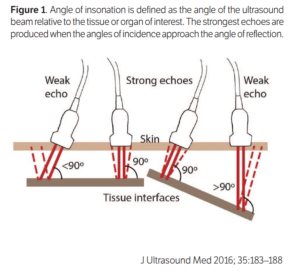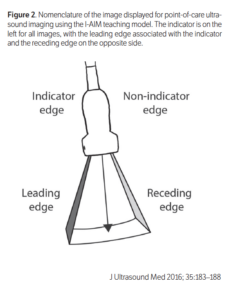The terms used for probe maneuvering have been inconsistent and confusing for both physicians and veterinarians. Recently, a good article was published in human medicine advocating standardization with the goal that training sonographers would be improved by using a universal language.
We have excellent chapters in the 2nd Edition of our Point-of-care Ultrasound Techniques textbook, these chapters written by Dr. Robert Fulton, that we refer you as supplemental to this Blog.
FASTVet Premium Members may watch the FASTVet Webinar Short(s). Free Samples of these Webinar Shorts may be found here.
The FASTVet Probe Maneuvers Terminology that we prefer are as follows:
- Rocking – same focal point
- Fanning (also called Tilting, we prefer Fanning)– same focal point
- Rotating- same focal point
- Sliding “cranial and caudal”
- Sweeping “midline to spine”
- Pressure/Compression – avoid as much as possible
- Pressure/Compression distorts underlying structures and potentially moves them out of your scanning plane
- Clinically used:
- To get closer to a structure that cannot be imaged due to depth limits on the machine
- To reduce “air trapping” and get a better image
- To move subcutaneous emphysema out of the scanning plane
- For Ballottement (jiggle) the urinary bladder for the detection of sediment and calculi

Angle of Insonation
Another important consideration involves the probe’s scanning plane. The scanning plane plays a role and contributes to image quality. Depending on what you are imaging, the angle of insonation is important and generally should be 90 degrees to the structure’s surface.
A good example of how how utilizing the angle of insonation contributes to image quality and artifacts is during Vet BLUE® lung ultrasound. The angle of insonation should be 90 degrees to the “Lung Line” to assess the lung surface for pathology because this 90 degree angle will 1) make the “Lung Line” sharp and crisp, and 2) will bring enhance air reverberation from shadowing to strong horizontal equidistant A-lines. An angle of insonation of 65-75 degrees to the “Lung Line” will make the “Lung Line” less crisp but is better observing “Lung Sliding”, the preferred term in human medicine (traditionally been called the Glide Sign in veterinary medicine) along with the FASTVet Original “One-eyed Gator Sign.”

Reference Points Regarding the Probe
- Reference Marker/Notch (Indicator) Side
- Non-Reference Marker/Notch (Non-Indicator) Side
- Leading Edge (Marker-Notch-Indicator Side)
- Receding Trailing Edge (Non-Marker-Notch-Indicator Side)

To read the Bahner et al. Journal of Ultrasound 2016 on Probe Maneuvering and Other Consideration click here.
Scanning Planes – Illustrations from Dr. Robert Fulton’s Chapter in Point-of-care Ultrasound Techniques, 2nd Edition, ©Wiley 2021.
- Longitudinal/Sagittal
- Transverse


Please send any comments to Dr. Greg Lisciandro, LearnGlobalFast@gmail.com
gl/GL 4-3-2024




